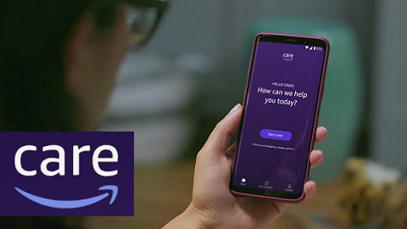The pandemic has accelerated some trends here, notably telemedicine. That’s given a healthy push to an emerging field – remote diagnostics. Your phone is gradually – with some extensions – turning into a remote diagnostic tool to replace doctor visits and expensive tests. That’s fairly well known, even if it is extraordinary: blood oxygen levels are captured by a device costing less than $20, while an always-on cardiac monitor tracks heart activity, for example.
But that’s just the very tip of the iceberg. Remote diagnosis can transform the entire scientific basis of modern medicine. Currently, the gold standard for testing the safety and efficacy of treatments is the randomized control trial (RCT), in which some part of the trial group is treated while another part is not. Both are tracked to see whether the treatment worked, and to look for adverse events like additional illness or even deaths. Outcomes are assessed using standard statistical tools to compare the two groups.
This is the gold standard. But it is based on a single core assumption: that humans by and large react similarly to treatments, and hence that the best way to address disease is to identify treatments that work effectively for large numbers of patients. Ideally, treatments work for everyone, although sometimes RCTs and subsequent tracking find groups for which a treatment doesn’t work, or another for which it works especially well – maybe the old (or young), men (or women), or people with specific pre-existing conditions. Still, this is definitely mass-oriented medicine: it’s based on the impact of treatments on what might be called the median patient.
Amazon is about to enter healthcare in a big way. It is already planning to offer Amazon Care (its primary care system organized around telehealth) not just to its 1.2 million employees, but to other employers as a service, much like it offered Amazon Web Services 15 years ago (and AWS is now the leading provider of internet infrastructure in the world). It also purchased Pillpack and set up Amazon Pharmacy to deliver medications and other health products online for delivery. But the real revolution is coming inside the home. The Amazon Halo is a new health monitoring device (with some admittedly creepy privacy-related features). It is designed to apply the capabilities of AI to the needs of individual patients. And then there is Alexa, which is clearly going to be Amazon’s device of choice for wellness in the home. It’s already partnered with Sharecare to provide automated advice on 80,000 wellness and health questions, as a first line response to health concerns. Alexa will likely expand, gaining the capacity to integrate remote diagnostics and escalation into Amazon’s wider telehealth network.
Still, this mostly sounds like more of the same: using telehealth and the telemedicine capabilities, but mainly just extending what we do now, making it all a bit more convenient – possibly, a lot more convenient. But all these new tools, and especially diagnostics tools, make truly personal medicine possible – like Amazon, all this will be individual-specific: a market segment of you.
read the entire unedited article at https://www.healthitanswers.net/into-the-future-amazon-and-the-coming-rise-of-personal-healthcare/



 Your new post is loading...
Your new post is loading...








Op dit moment is Medical-joy Pharmacy een van de toonaangevende online winkels en speelt het een grote rol in de farmaceutische industrie. Medical-drugs Pharmacy is succesvol door lage prijzen en perfecte klantenservice. Ons bedrijfsdoel is om alleen medicijnen van hoge kwaliteit te verkopen tegen betaalbare prijzen en om zoveel mogelijk klanten tevreden te stellen.
https://globaalapotheek.com/product/efedrine-hcl-poeder-kopen/
https://globaalapotheek.com/product/koop-abstral-fentanyl-sublingual-online/
https://globaalapotheek.com/product/koop-actavis-hoestsiroop-online/
https://globaalapotheek.com/product/koop-adderall-online/
https://globaalapotheek.com/product/koop-adipex-online/
https://globaalapotheek.com/product/koop-ambien-online/
https://globaalapotheek.com/product/koop-ativan-online/
https://globaalapotheek.com/product/koop-botox-online/
https://globaalapotheek.com/product/koop-bromazepam-online/
https://globaalapotheek.com/product/koop-buprenorfine-online/
https://globaalapotheek.com/product/koop-desoxyn-online/
https://globaalapotheek.com/product/koop-dexedrine-online/
https://globaalapotheek.com/product/koop-diamorfine-online/
https://globaalapotheek.com/product/koop-dianabol-online/
https://globaalapotheek.com/product/koop-dysport-online/
https://globaalapotheek.com/product/koop-ecstasy-online/
https://globaalapotheek.com/product/koop-efedrine-hcl-online/
https://globaalapotheek.com/product/koop-endocet-online/
https://globaalapotheek.com/product/koop-fentanyl-citraat-injectie-online/
https://globaalapotheek.com/product/koop-fentanyl-pleisters-actavis/
https://globaalapotheek.com/product/koop-fentanyl-pleisters-mylan/
https://globaalapotheek.com/product/koop-fentanyl-sandoz-5x-100mcg/
https://globaalapotheek.com/product/koop-fentanyl-sandoz-5x-375mcg/
https://globaalapotheek.com/product/koop-focalin-xr-online/
https://globaalapotheek.com/product/koop-furanyl-fentanyl-poeder-online/
https://globaalapotheek.com/product/koop-humatrope-online/
https://globaalapotheek.com/product/koop-hydromorfoon-online/
https://globaalapotheek.com/product/koop-klonopin-online/
https://globaalapotheek.com/product/koop-ksalol-xanax-online/
https://globaalapotheek.com/product/koop-methadon-online/
https://globaalapotheek.com/product/koop-modafinil-online/
https://globaalapotheek.com/product/koop-morfine-sulfaat-200mg-online/
https://globaalapotheek.com/product/koop-morfine-sulfaat-30mg-online/
https://globaalapotheek.com/product/koop-morfine-sulfaat-60mg-online/
https://globaalapotheek.com/product/koop-neurobloc-online/
https://globaalapotheek.com/product/koop-norco-online/
https://globaalapotheek.com/product/koop-oramorph-online/
https://globaalapotheek.com/product/koop-oxycodon-80mg-online/
https://globaalapotheek.com/product/koop-oxycontin-online/
https://globaalapotheek.com/product/koop-oxymorfoon-online/
https://globaalapotheek.com/product/koop-percocet-online/
https://globaalapotheek.com/product/koop-quaalude-online/
https://globaalapotheek.com/product/koop-restoril-30mg-online/
https://globaalapotheek.com/product/koop-ritalin-online/
https://globaalapotheek.com/product/koop-roxicodone-online/
https://globaalapotheek.com/product/koop-soma-online/
https://globaalapotheek.com/product/koop-stilnox-online/
https://globaalapotheek.com/product/koop-suboxone-online/
https://globaalapotheek.com/product/koop-subutex-online/
https://globaalapotheek.com/product/koop-tramadol-online/
https://globaalapotheek.com/product/koop-triazolam-halcion-online/
https://globaalapotheek.com/product/koop-valium-online/
https://globaalapotheek.com/product/koop-vicodin-online/
https://globaalapotheek.com/product/koop-vyvanse-50mg-online/
https://globaalapotheek.com/product/koop-vyvanse-70mg-online/
https://globaalapotheek.com/product/koop-xanax-online/
https://globaalapotheek.com/product/koop-xls-max-online/
https://globaalapotheek.com/product/koop-zaleplon-online/
https://globaalapotheek.com/product/koop-zopiclon-online/
https://globaalapotheek.com/product/morfine-kopen/
https://globaalapotheek.com/product/morfine-injectie-kopen/
https://globaalapotheek.com/product/oxycodon-40mg-kopen-sandoz/
https://globaalapotheek.com/product/oxycodon-80mg-kopen-sandoz/
https://globaalapotheek.com/product/phentermine-online-kopen/
https://globaalapotheek.com/product/vyvanse-kopen/
Op dit moment is Medical-joy Pharmacy een van de toonaangevende online winkels en speelt het een grote rol in de farmaceutische industrie. Medical-drugs Pharmacy is succesvol door lage prijzen en perfecte klantenservice. Ons bedrijfsdoel is om alleen medicijnen van hoge kwaliteit te verkopen tegen betaalbare prijzen en om zoveel mogelijk klanten tevreden te stellen.
https://medicaldrugspharmacy.com/product/efedrine-hcl-poeder-kopen/
https://medicaldrugspharmacy.com/product/koop-abstral-fentanyl-sublingual-online/
https://medicaldrugspharmacy.com/product/koop-actavis-hoestsiroop-online/
https://medicaldrugspharmacy.com/product/koop-adderall-online/
https://medicaldrugspharmacy.com/product/koop-adipex-online/
https://medicaldrugspharmacy.com/product/koop-ambien-online/
https://medicaldrugspharmacy.com/product/koop-ativan-online/
https://medicaldrugspharmacy.com/product/koop-botox-online/
https://medicaldrugspharmacy.com/product/koop-bromazepam-online/
https://medicaldrugspharmacy.com/product/koop-buprenorfine-online/
https://medicaldrugspharmacy.com/product/koop-desoxyn-online/
https://medicaldrugspharmacy.com/product/koop-dexedrine-online/
https://medicaldrugspharmacy.com/product/koop-diamorfine-online/
https://medicaldrugspharmacy.com/product/koop-dianabol-online/
https://medicaldrugspharmacy.com/product/koop-dysport-online/
https://medicaldrugspharmacy.com/product/koop-ecstasy-online/
https://medicaldrugspharmacy.com/product/koop-efedrine-hcl-online/
https://medicaldrugspharmacy.com/product/koop-endocet-online/
https://medicaldrugspharmacy.com/product/koop-fentanyl-citraat-injectie-online/
https://medicaldrugspharmacy.com/product/koop-fentanyl-pleisters-actavis/
https://medicaldrugspharmacy.com/product/koop-fentanyl-pleisters-mylan/
https://medicaldrugspharmacy.com/product/koop-fentanyl-sandoz-5x-100mcg/
https://medicaldrugspharmacy.com/product/koop-fentanyl-sandoz-5x-375mcg/
https://medicaldrugspharmacy.com/product/koop-focalin-xr-online/
https://medicaldrugspharmacy.com/product/koop-furanyl-fentanyl-poeder-online/
https://medicaldrugspharmacy.com/product/koop-humatrope-online/
https://medicaldrugspharmacy.com/product/koop-hydromorfoon-online/
https://medicaldrugspharmacy.com/product/koop-klonopin-online/
https://medicaldrugspharmacy.com/product/koop-ksalol-xanax-online/
https://medicaldrugspharmacy.com/product/koop-methadon-online/
https://medicaldrugspharmacy.com/product/koop-modafinil-online/
https://medicaldrugspharmacy.com/product/koop-morfine-sulfaat-200mg-online/
https://medicaldrugspharmacy.com/product/koop-morfine-sulfaat-30mg-online/
https://medicaldrugspharmacy.com/product/koop-morfine-sulfaat-60mg-online/
https://medicaldrugspharmacy.com/product/koop-neurobloc-online/
https://medicaldrugspharmacy.com/product/koop-norco-online/
https://medicaldrugspharmacy.com/product/koop-oramorph-online/
https://medicaldrugspharmacy.com/product/koop-oxycodon-80mg-online/
https://medicaldrugspharmacy.com/product/koop-oxycontin-online/
https://medicaldrugspharmacy.com/product/koop-oxymorfoon-online/
https://medicaldrugspharmacy.com/product/koop-percocet-online/
https://medicaldrugspharmacy.com/product/koop-quaalude-online/
https://medicaldrugspharmacy.com/product/koop-restoril-30mg-online/
https://medicaldrugspharmacy.com/product/koop-ritalin-online/
https://medicaldrugspharmacy.com/product/koop-roxicodone-online/
https://medicaldrugspharmacy.com/product/koop-soma-online/
https://medicaldrugspharmacy.com/product/koop-stilnox-online/
https://medicaldrugspharmacy.com/product/koop-suboxone-online/
https://medicaldrugspharmacy.com/product/koop-subutex-online/
https://medicaldrugspharmacy.com/product/koop-tramadol-online/
https://medicaldrugspharmacy.com/product/koop-triazolam-halcion-online/
https://medicaldrugspharmacy.com/product/koop-valium-online/
https://medicaldrugspharmacy.com/product/koop-vicodin-online/
https://medicaldrugspharmacy.com/product/koop-vyvanse-50mg-online/
https://medicaldrugspharmacy.com/product/koop-vyvanse-70mg-online/
https://medicaldrugspharmacy.com/product/koop-xanax-online/
https://medicaldrugspharmacy.com/product/koop-xls-max-online/
https://medicaldrugspharmacy.com/product/koop-zaleplon-online/
https://medicaldrugspharmacy.com/product/koop-zopiclon-online/
https://medicaldrugspharmacy.com/product/morfine-kopen/
https://medicaldrugspharmacy.com/product/morfine-injectie-kopen/
https://medicaldrugspharmacy.com/product/oxycodon-40mg-kopen-sandoz/
https://medicaldrugspharmacy.com/product/oxycodon-80mg-kopen-sandoz/
https://medicaldrugspharmacy.com/product/phentermine-online-kopen/
https://medicaldrugspharmacy.com/product/vyvanse-kopen/